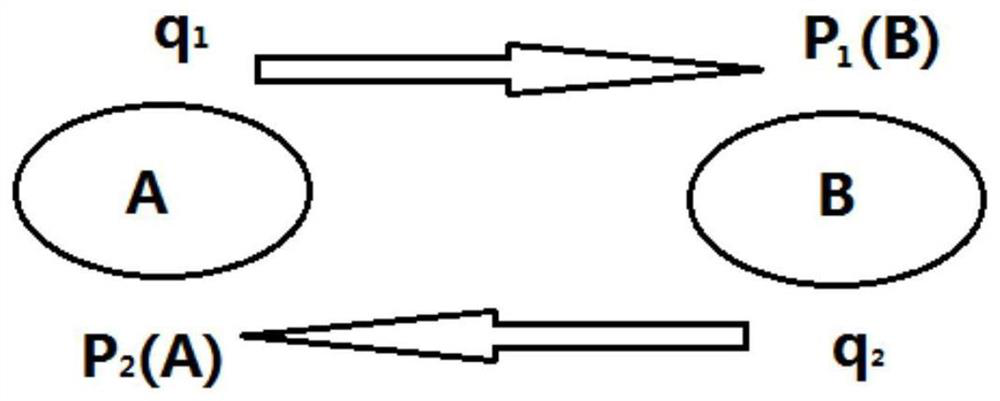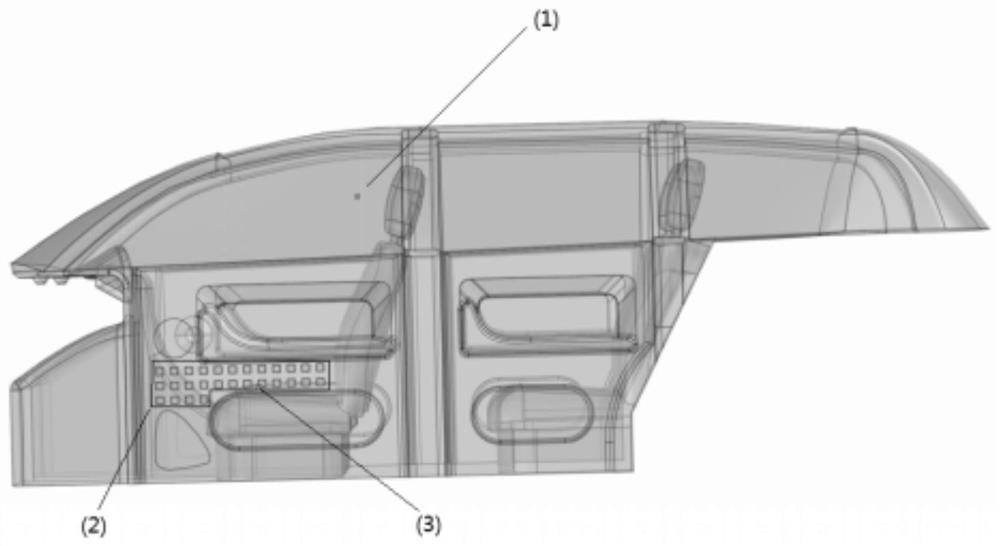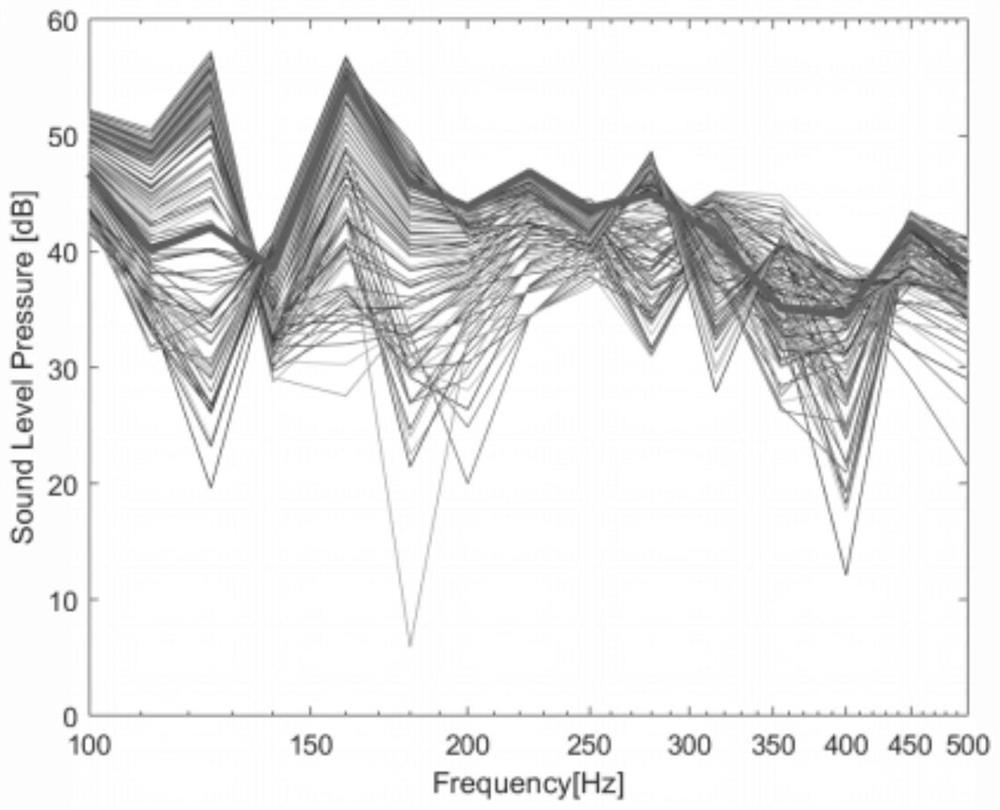Reciprocity theorem-based automobile bass unit optimal distribution method
A reciprocity theorem, automotive technology, applied in the field of acoustics, can solve problems such as the inability to obtain the optimal solution, ignoring the influence of the acoustic environment of different models, and the lack of installation of automotive bass units, reducing the development cycle and cost, and improving computing efficiency. Effect
- Summary
- Abstract
- Description
- Claims
- Application Information
AI Technical Summary
Problems solved by technology
Method used
Image
Examples
Embodiment 1
[0036] This embodiment discloses a method for optimal placement of the car bass unit based on the reciprocity theorem. After importing the approximate cuboid cavity, CAD drawing and 3D scanning drawing of the car, a finite element model is established; the main driver's seat of the car is determined. The optimal position is 10cm in front of the headrest, and the acceleration-sound pressure transfer function between the low-frequency speaker and the optimal position is calculated, and then the standard deviation is calculated by the transfer function to measure the flatness; thus, the optimal position for placing the low-frequency unit is obtained;
[0037] Among them, the physical properties of the interior of the car are expressed by surface impedance, and the low-frequency speaker is expressed by a rigid piston or an approximate point sound source.
[0038] This embodiment provides a method for optimal placement of car bass units based on the reciprocity theorem, including th...
PUM
 Login to View More
Login to View More Abstract
Description
Claims
Application Information
 Login to View More
Login to View More - R&D
- Intellectual Property
- Life Sciences
- Materials
- Tech Scout
- Unparalleled Data Quality
- Higher Quality Content
- 60% Fewer Hallucinations
Browse by: Latest US Patents, China's latest patents, Technical Efficacy Thesaurus, Application Domain, Technology Topic, Popular Technical Reports.
© 2025 PatSnap. All rights reserved.Legal|Privacy policy|Modern Slavery Act Transparency Statement|Sitemap|About US| Contact US: help@patsnap.com



